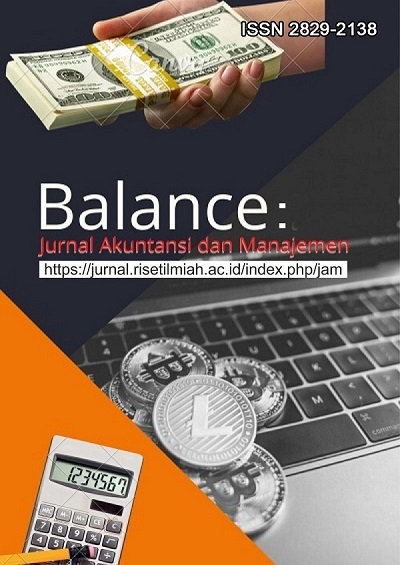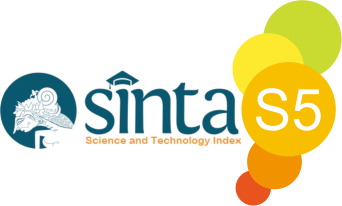Motif Rasional di Balik Job Hopping: Peran Pertumbuhan Karir dan Lingkungan Kerja Toksik pada Generasi Z
DOI:
https://doi.org/10.59086/jam.v4i2.1043Keywords:
Job Hopping, Pertumbuhan Karir, Lingkungan Kerja Toksik, Generasi ZAbstract
This study examines the influence of career growth and toxic workplace environment on job hopping among Generation Z employees in Indonesian Business Process Outsourcing (BPO) companies. Career growth represents the advance motive, while toxic workplace environment represents the escape motive. This research used a quantitative approach, an online survey was conducted with 100 Gen Z respondents who had changed jobs at least twice. Data were analyzed with PLS-SEM using SmartPLS 4.0. The results show that limited career growth significantly increases job hopping for career progression, while a toxic workplace environment significantly drives employees to leave to avoid psychological harm. The study recommends human resource management to provide a clear promotion pathways and a healthy work culture to reduce job hopping and turnover in BPO companies.
Downloads
References
Anjum, A., & Ming, X. (2018). Combating Toxic Workplace Environment: An Empirical Study in The Context of Pakistan. Journal of Modelling in Management, 13(3), 675-697. https://doi.org/10.1108/JM2-02-2017-0023
Anjum, A., & Muazzam, A. (2018). Workplace Bullying and Turnover Intention Among University Teachers. Journal of Arts and Social Sciences, 5(2), 51-62.
Arifin, K. N., Fitriana, N., & Yuniasanti, R. (2024). Gen Z Generation: Does Job Hopping Matter. Jurnal Psikologi Malaysia, 38(2).
Badan Pusat Statistik. 2024. Jumlah Penduduk Menurut Kelompok Umur dan Jenis Kelamin, 2023. Diakses pada Januari 2025, dari https://www.bps.go.id/id/statistics-table/3/WVc0MGEyMXBkVFUxY25KeE9HdDZkbTQzWkVkb1p6MDkjMw==/jumlah-penduduk-menurut-kelompok-umur-dan-jenis-kelamin--2023.html?year=2023
Bhatti, M. M., & Alvi, M. (2022). Impact of Career Growth on Employee Job Hopping with Moderating Role of Job Security. International Journal of Social Science & Entrepreneurship, 2(2), 218-226.
Colligan, T. W., & Higgins, E. M. (2006). Workplace Stress: Etiology and Consequences. Journal of Workplace Behavioral Health, 21(2), 89-97. https://doi.org/10.1300/J490v21n02_07
Cortina, L. M. (2008). Unseen Injustice: Incivility as Modern Discrimination in Organizations. Academy of Management Review, 33(1), 55-75. https://doi.org/10.5465/amr.2008.27745097
Deci, E. L., Olafsen, A. H., & Ryan, R. M. (2017). Self-Determination Theory in Work Organizations: The State of A Science. Annual Review of Organizational Psychology and Organizational Behavior, 4, 19-43. https://doi.org/10.1146/annurev-orgpsych-032516-113108
Deci, E. L., & Ryan, R. M. (2000). The" What" and" Why" of Goal Pursuits: Human Needs and The Self-Determination of Behavior. Psychological Inquiry, 11(4), 227-268. https://doi.org/10.1207/S15327965PLI1104_01
Dougherty, T. W., Dreher, G. F., & Whitely, W. (1993). The MBA as Careerist: An Analysis of Early-Career Job Change. Journal of Management, 19(3), 535-548. https://doi.org/10.1016/0149-2063(93)90003-6
Feiertag, J., & Berge, Z. L. (2008). Training Generation N: How Educators Should Approach The Net Generation. Education + Training, 50(6), 457-464. https://doi.org/10.1108/00400910810901782
Feng, W. C., & Angeline, T. (2010). Turnover Intention and Job Hopping Behaviour of Music Teachers in Malaysia. African Journal of Business Management, 4(4), 425.
Gabriel, O. D., De Alwi, C. D. T. V., Jayang, E. A., & Wai, S. L. C. (2022). The Impact of Transformational Leadership on Generation Z Employee Retention and Innovative Behaviour: A Case of Malaysian Hotel Industry. International Journal of Multicultural and Multireligious Understanding, 9(4), 35-53.
Gabrielova, K., & Buchko, A. A. (2021). Here Comes Generation Z: Millennials as Managers. Business Horizons, 64(4), 489-499. https://doi.org/10.1016/j.bushor.2021.02.013
Ganco, M., Ziedonis, R. H., & Agarwal, R. (2015). More Stars Stay, But The Brightest Ones Still Leave: Job Hopping in The Shadow of Patent Enforcement. Strategic Management Journal, 36(5), 659-685. https://doi.org/10.1002/smj.2239
Ghiselli, E. E. (1974). Some Perspectives for Industrial Psychology. American Psychologist, 29(2), 80-87. https://psycnet.apa.org/doi/10.1037/h0036077
Goh, E., & Lee, C. (2018). A Workforce to be Reckoned with: The Emerging Pivotal Generation Z Hospitality Workforce. International Journal of Hospitality Management, 73, 20-28. https://doi.org/10.1016/j.ijhm.2018.01.016
Hair, J.F., Black, W.C., Babin, B.J., Anderson, R.E., dan Tatham, R. L. (2006). Multivariat Data Analysis 6 th Ed. Pearson Education. New Jersey.
Hall, D. T. (2004). The Protean Career: A Quarter-Century Journey. Journal of Vocational Behavior, 65(1), 1-13. https://doi.org/10.1016/j.jvb.2003.10.006
Iqbal, J., Asghar, A., & Asghar, M. Z. (2022). Effect of Despotic Leadership on Employee Turnover Intention: Mediating Toxic Workplace Environment and Cognitive Distraction in Academic Institutions. Behavioral Sciences, 12(5), 125. https://doi.org/10.3390/bs12050125
Janssen, D., & Carradini, S. (2021). Generation Z Workplace Communication Habits and Expectations. IEEE Transactions on Professional Communication, 64(2), 137-153. https://doi.org/10.1109/TPC.2021.3069288
Khan, S., Sabri, P. S. U., & Nasir, N. (2016). Cost of Workplace Bullying for Employees: an Anti-Bullying Policy Through Introduction of Workplace Spirituality in Higher Education Sector of Lahore, Pakistan. Science International, 28(1), 541-549.
Khatri, N., Fern, C. T., & Budhwar, P. (2001). Explaining Employee Turnover in An Asian Context. Human Resource Management Journal, 11(1), 54-74. https://doi.org/10.1111/j.1748-8583.2001.tb00032.x
Kuruvilla, S., & Ranganathan, A. (2010). Globalisation and Outsourcing: Confronting New Human Resource Challenges in India's Business Process Outsourcing Industry. Industrial Relations Journal, 41(2), 136-153. https://doi.org/10.1111/j.1468-2338.2009.00559.x
Lake, C. J., Highhouse, S., & Shrift, A. G. (2018). Validation of The Job-Hopping Motives Scale. Journal of Career Assessment, 26(3), 531-548. https://doi.org/10.1177/1069072717722765
Lam, C. K., Walter, F., & Huang, X. (2017). Supervisors' Emotional Exhaustion and Abusive Supervision: The Moderating Roles of Perceived Subordinate Performance and Supervisor Self‐Monitoring. Journal of Organizational Behavior, 38(8), 1151-1166. https://doi.org/10.1002/job.2193
Lemeshow, S., Jr, D. W. H., Klar, J., & Lwanga, S. K. (1990). Adequacy of Sample Size in Health Studies. John Wiley & Sons Ltd. England.
Maertz Jr, C. P., & Griffeth, R. W. (2004). Eight Motivational Forces and Voluntary Turnover: A Theoretical Synthesis with Implications for Research. Journal of Management, 30(5), 667-683. https://doi.org/10.1016/j.jm.2004.04.001
Nguyen, H. P., & Le, H. N. (2022). Determinants of Job-Hopping Behavior: The Case of Information Technology Sector. International Journal of Law and Management, 64(3), 308-320. https://doi.org/10.1108/IJLMA-06-2020-0178
Pandey, D. L. (2019). Job Hopping Tendency in Millenials. NCC Journal, 4(1), 41-46.
Pielago, M. P., & Vibora, R. B. (2024). Generation Z and Millennial Employees' Perspective on Quiet Quitting or Rage Applying in Relation to Career Growth. International Journal of Research Publications, 160(1), 8-17.
Rasool, S. F., Wang, M., Tang, M., Saeed, A., & Iqbal, J. (2021). How Toxic Workplace Environment Effects The Employee Engagement: The Mediating Role of Organizational Support and Employee Wellbeing. International Journal of Environmental Research and Public Health, 18(5), 2294. https://doi.org/10.3390/ijerph18052294
Reeves, T.C., & Oh, E. (2007). “Generational differences”, in Spector, M.J., Merrill, D.M., van Merriënboer, J. and Driscoll, M.P. Handbook of Research on Educational Communications and Technology (Eds). Springer. Berlin.
Riyanto, S., & Hatmawan, A. A. (2020). Metode Riset Penelitian Kuantitatif Penelitian di Bidang Manajemen, Teknik, Pendidikan dan Eksperimen. Deepublish. Yogyakarta.
Samma, M., Zhao, Y., Rasool, S. F., Han, X., & Ali, S. (2020). Exploring The Relationship Between Innovative Work Behavior, Job Anxiety, Workplace Ostracism, and Workplace Incivility: Empirical Evidence from Small and Medium Sized Enterprises (SMEs). In Healthcare. 8(4), 508). https://doi.org/10.3390/healthcare8040508
Steenackers, K., & Guerry, M. A. (2016). Determinants of Job-Hopping: An Empirical Study in Belgium. International Journal of Manpower, 37(3), 494-510. https://doi.org/10.1108/IJM-09-2014-0184
Turner, A. (2015). Generation Z: Technology and Social Interest. The Journal of Individual Psychology, 71(2), 103-113. https://doi.org/10.1353/jip.2015.0021
Welters, R., Mitchell, W., & Muysken, J. (2014). Self Determination Theory and Employed Job Search. Journal of Economic Psychology, 44, 34-44. https://doi.org/10.1016/j.joep.2014.06.002
Weng, Q., & McElroy, J. C. (2012). Organizational Career Growth, Affective Occupational Commitment and Turnover Intentions. Journal of Vocational Behavior, 80(2), 256-265. https://doi.org/10.1016/j.jvb.2012.01.014
Weng, Q., & Xi, Y. (2011). Career Growth Study: Scale Development and Validity Test. Management Review, 23(10), 132-143. https://doi.org/10.14120/j.cnki.cn11-5057/f.2011.10.017
Yang, D. H., Kim, S., Nam, C., & Min, J. W. (2007). Developing a Decision Model for Business Process Outsourcing. Computers & Operations Research, 34(12), 3769-3778. https://doi.org/10.1016/j.cor.2006.01.012
Yang, Y., Liu, Y. H., Liu, J. Y., & Zhang, H. F. (2015). The Impact of Work Support and Organizational Career Growth on Nurse Turnover Intention in China. International Journal of Nursing Sciences, 2(2), 134-139. https://doi.org/10.1016/j.ijnss.2015.04.006
Zahari, S. N. S., & Puteh, F. (2023). Gen Z Workforce and Job-Hopping Intention: A Study Among University Students in Malaysia. Sciences, 13(1). 902-927. http://dx.doi.org/10.6007/IJARBSS/v13-i1/15540
Downloads
Published
How to Cite
Issue
Section
License
Copyright (c) 2025 Anita Dwi Wulandari

This work is licensed under a Creative Commons Attribution 4.0 International License.
This is an open-access journal. All works are published under the Creative Commons license CC-BY which means that all content is freely available at no charge to the user or his/her Institution. Users are allowed to read, download, copy, write, improve, and create derivative creation even for other lawful purposes, this license permits anyone to, as long as they cite and license the derivative creation under similar terms

This work is licensed under a Creative Commons Attribution 4.0 International License.


















